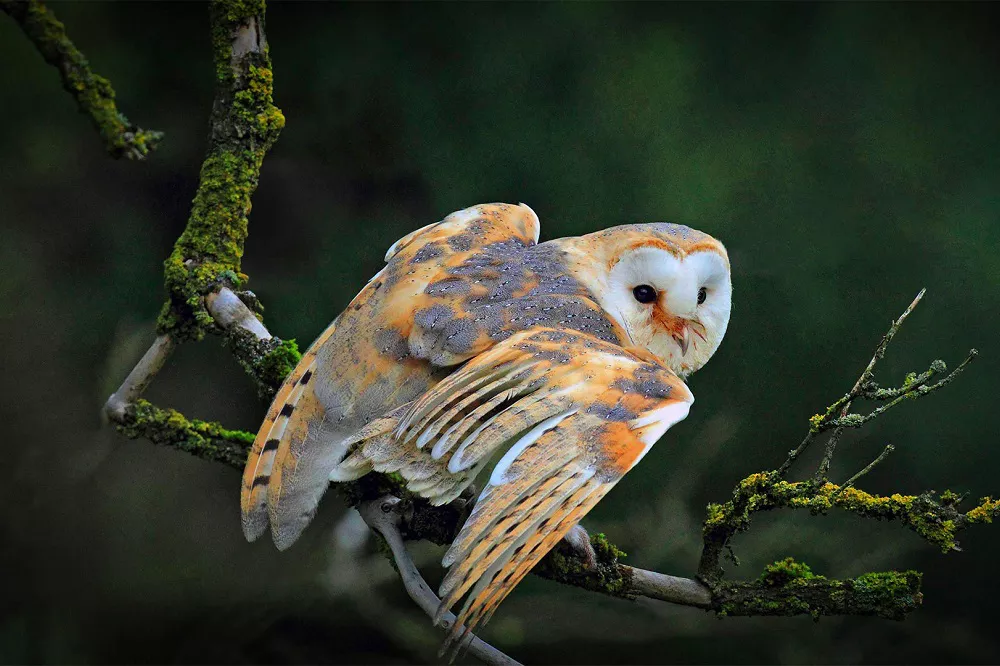Barn owls are one of the most fascinating species of owl found across the globe. These nocturnal birds of prey are known for their heart-shaped facial disc, striking white and brown feathers, and exceptional hunting abilities. In this article, we will explore the world of barn owls, including their physical characteristics, habitat, diet, behavior, and conservation status.
- Physical Characteristics
Barn owls are easily recognizable by their unique facial disc, which helps them to locate and capture prey in the dark. The disc is made up of feathers arranged in a circular pattern around their eyes, which helps to amplify sound and focus it towards their ears. Their heart-shaped facial disc also helps to funnel sound from different directions into their ears, which are located on either side of their head.
These birds have a wingspan of around 1.1 meters, and they weigh between 300-500 grams. Their feathers are a mix of brown, gray, and white, with a distinctive white heart-shaped face. Their wings are broad and rounded, which allows them to fly almost silently through the air.
- Habitat
Barn owls are found in almost every continent in the world, except for Antarctica. They are most commonly found in open grasslands, agricultural fields, marshes, and along riverbanks. They are also known to inhabit urban areas, such as barns and attics, where they can find shelter and prey.
- Diet
Barn owls are carnivorous and primarily feed on small rodents, such as mice, voles, and shrews. They use their keen sense of hearing to locate their prey, which they capture with their sharp talons. They swallow their prey whole, regurgitating pellets of indigestible material, such as bones and fur.
- Behavior
Barn owls are nocturnal and hunt mainly at night. They are solitary birds, except during breeding season, when they form monogamous pairs. They communicate with each other using a range of sounds, including hisses, screams, and hoots. Barn owls are also known for their silent flight, which allows them to hunt without being heard by their prey.
- Conservation Status
Barn owls are classified as a species of “Least Concern” by the International Union for Conservation of Nature (IUCN). However, their populations are declining in some areas due to habitat loss, pesticide use, and road mortality. Many organizations are working to protect and conserve these fascinating birds, including providing nesting boxes in suitable habitats and raising awareness about their conservation needs.
In conclusion, barn owls are a fascinating species of owl that are well adapted for their nocturnal lifestyle. Their unique physical characteristics, habitat, diet, and behavior make them one of the most interesting birds of prey in the world. While their populations are generally stable, it is important that we continue to protect and conserve these amazing creatures for future generations to enjoy.


 Facebook
Facebook  Instagram
Instagram  Youtube
Youtube 